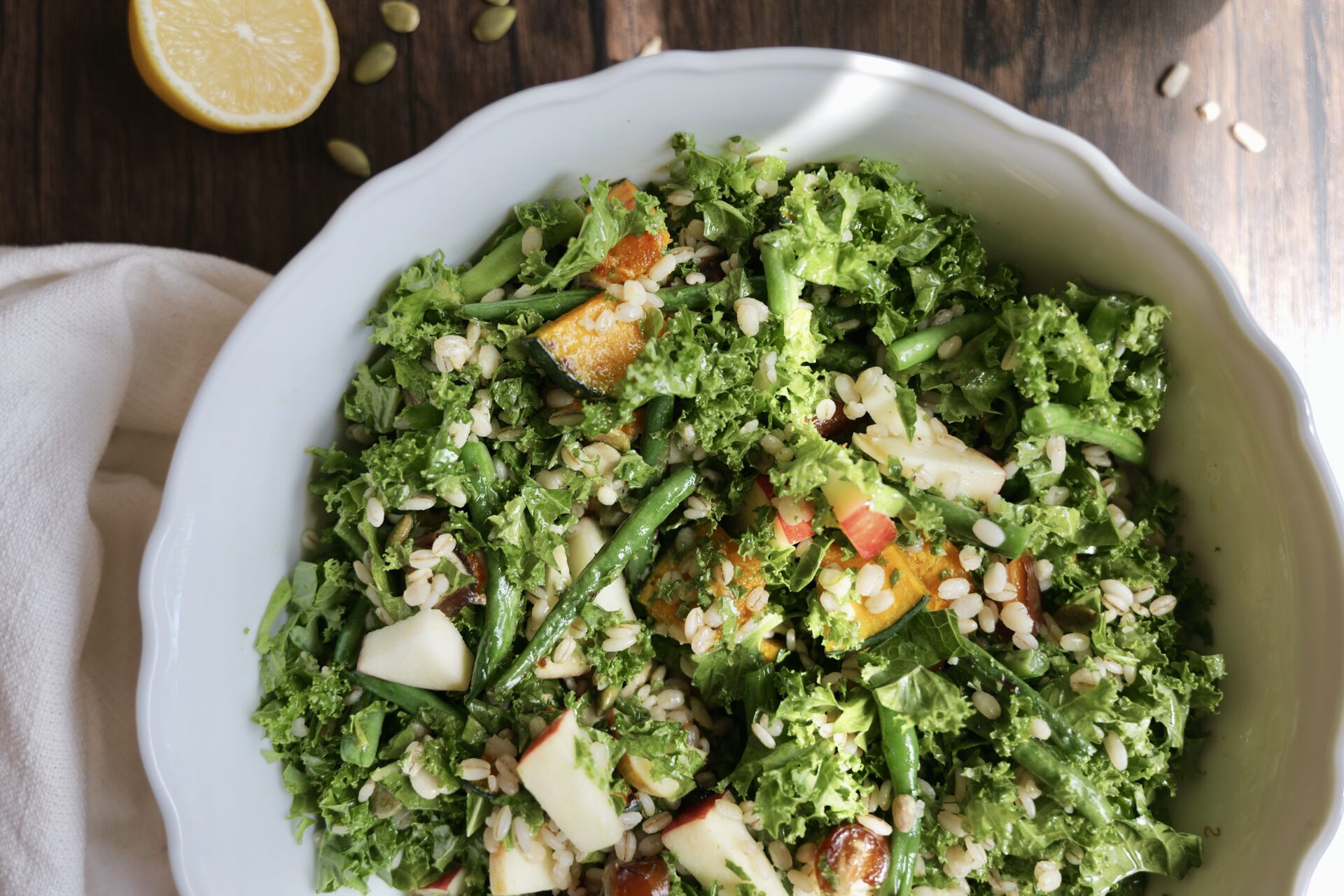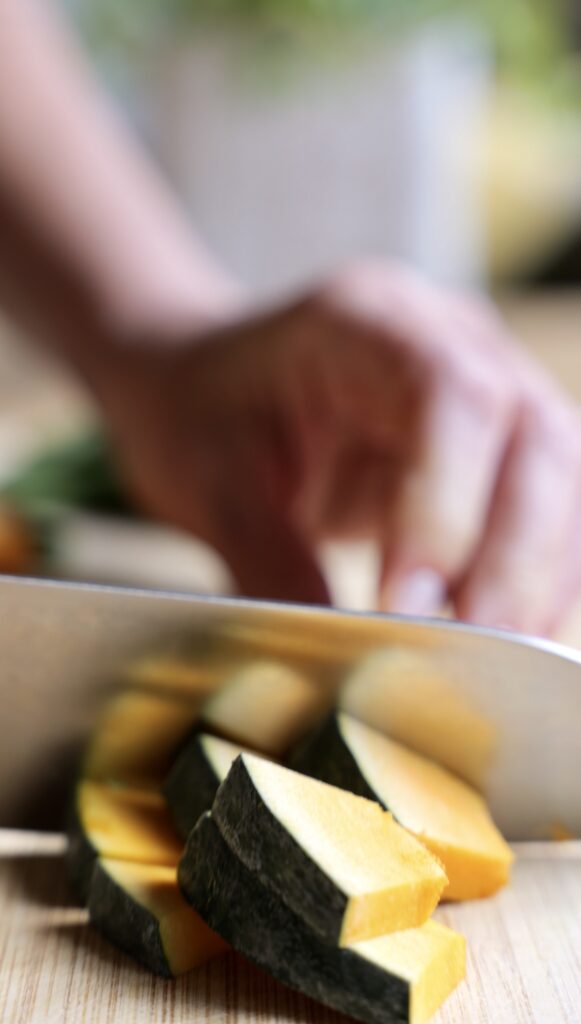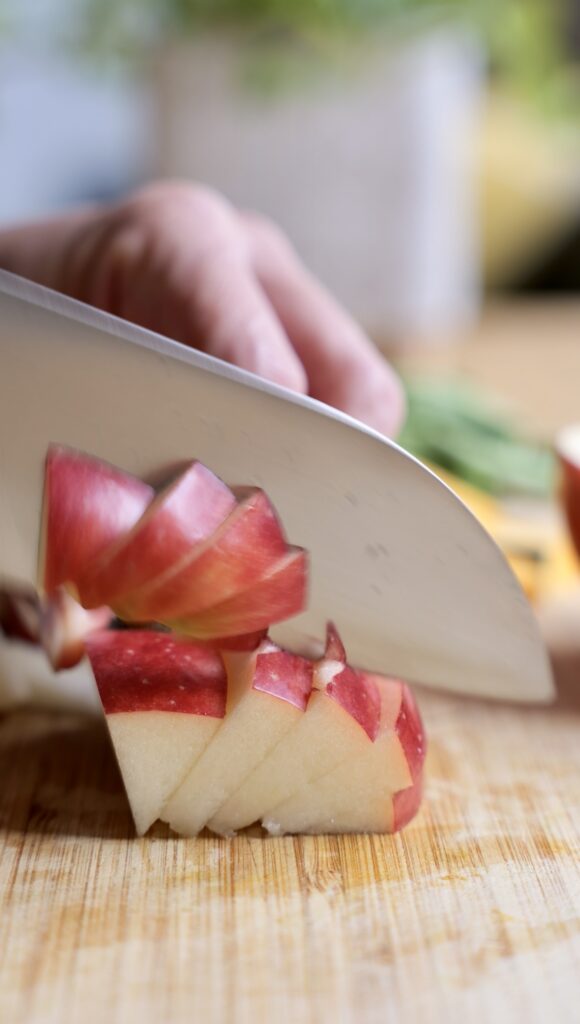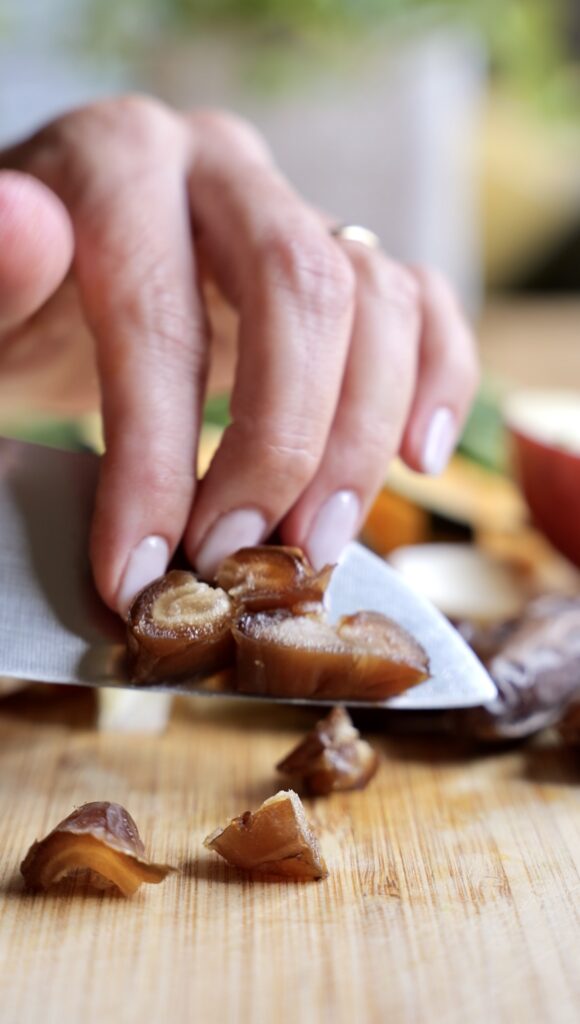Hello, there! Autumn is officially peeking around the corner. You know what that means? No, not just pumpkin spice lattes, although I do have a soft spot for them. It means it’s the season of comfort food. Now, before you dive into that pile of mashed potatoes or grandma’s apple pie, let’s pause and give a nod to something equally comforting but bursting with nutrients: my Kale-Barley Power Bowl with a zesty Dijon Lemon dressing.
Jump to Recipe
A Tasty Medley: Why This Power Bowl?
Firstly, let’s dive into why I love a good power bowl. For starters, it’s a flavor rollercoaster. Imagine biting into crunchy kale, and then—bam!—sweet dates and apples enter the scene. Not to forget, the nutty undertones of pan fried barley and that roasted seed crunch. In short, it’s everything a bowl should be.
Connecting Food and Longevity: The Blue Zone Way
Next up, have you guys watched the Netflix documentary “Blue Zones”? It’s an eye-opener. Seriously, it showcases communities where people live longer due to a healthy lifestyle. And guess what? A key part of that lifestyle is nutrition. So, this salad is more than just a tasty dish. It’s packed with Blue Zone-inspired nutrients that are a gift to your body.

Dijon Lemon Dressing: The Icing on the Cake
Now, let’s talk dressing. We’ve all had salads that promised a lot but delivered so little. Well, that’s not the case here. My Dijon lemon dressing is the real MVP. It’s tangy, garlicky, and brings the whole vegan, gluten-free masterpiece together. Honestly, it’s like the “cherry on top” for this nutritious power bowl.
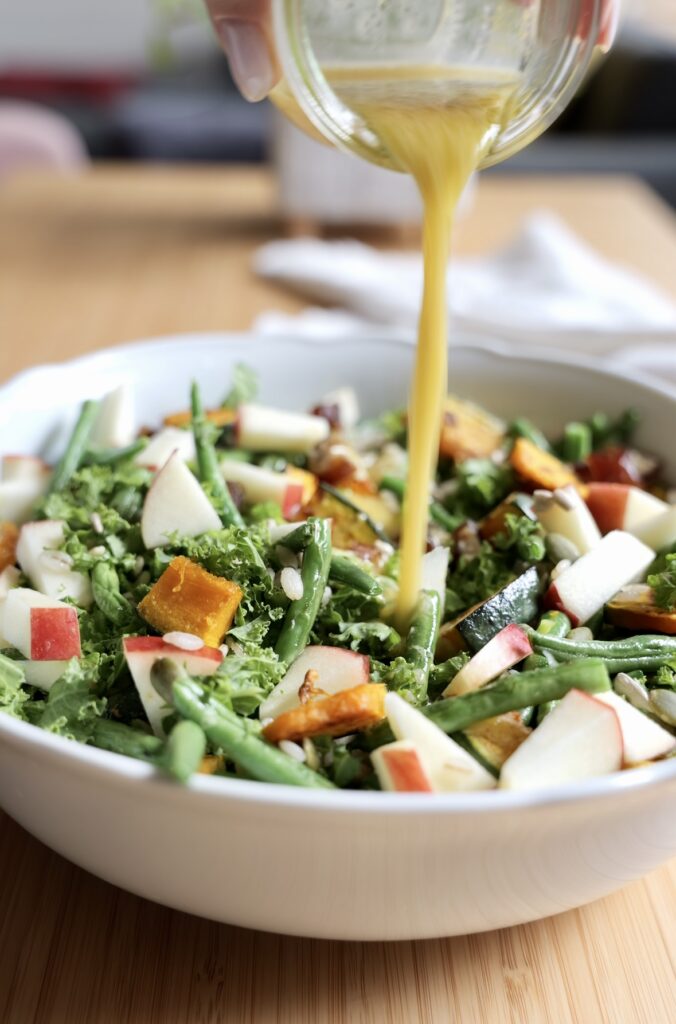
Hearty Kale-Barley Power Bowl
Course: SaladsCuisine: AmericanDifficulty: Easy2
servings15
minutes20
minutes428
kcalThis yields 2 large servings. Calories do not include the dressing.
Ingredients
- For the Power Bowl:
4 cups chopped Kale
1 1/2 cups cooked barley (220 grams of cooked barley)
100g green beans ends removed and cut in half
120g kabocha squash cut into small bites
100g apples chopped into small bites
4 dates, chopped
15g mix of pumpkin and sunflower seeds, roasted and salted
olive oil to pan fry barley and vegetables (approximately 1 tablespoon)
- Dijon Lemon Dressing:
1/4 cup Olive Oil
1/4 cup Fresh Lemon Juice
1 clove Fresh Garlic, crushed
1 tsp Salt
Black Pepper to taste
1 tbsp Dijon Mustard
Directions
- Heat 2 tsp olive oil in a pan. Add the cooked barley. Stir frequently on medium heat for about 5-8 minutes. You want it slightly crispy. Remove and set aside.
- In the same pan, add another 2 tsp of olive oil. Toss in green beans and kabocha squash, cubed or sliced. Sprinkle with salt. Cook until tender, mixing often so it does not burn.
- While that’s cooking, chop the kale, apples, and dates. Place these in a large bowl.
- Add the cooked barley, green beans, and kabocha to the large bowl.
- Add the pumpkin and sunflower seeds.
- For the dressing, mix olive oil, lemon juice, garlic, salt, pepper, and Dijon mustard in a separate small bowl.
- Drizzle your desired amount of dressing over the bowl’s contents. I usually use half and save the rest for another dish.
Please be aware that the information provided with this recipe is intended solely for general informational purposes. While we have tried to accurately test this recipe and present precise measurements and instructions, individual results may vary due to differences in ingredient types, cooking equipment, or preparation techniques.The nutritional information accompanying this recipe is not intended as dietary or medical advice. For any specific health or nutritional inquiries, please consult a registered dietitian or healthcare professional. We disclaim any liability for inaccuracies or misrepresentation of the provided information. We encourage users to approach this recipe with a mindful understanding that cooking is both an art and a science, and to use their best judgment in the kitchen.
Nutrition Facts
2 servings per container
- Amount Per ServingCalories428
- % Daily Value *
- Total Fat
11g
17%
- Total Carbohydrate
82g
28%
- Dietary Fiber 0g 0%
- Sugars 20g
- Protein 11.5g 23%
* The % Daily Value tells you how much a nutrient in a serving of food contributes to a daily diet. 2,000 calories a day is used for general nutrition advice.

